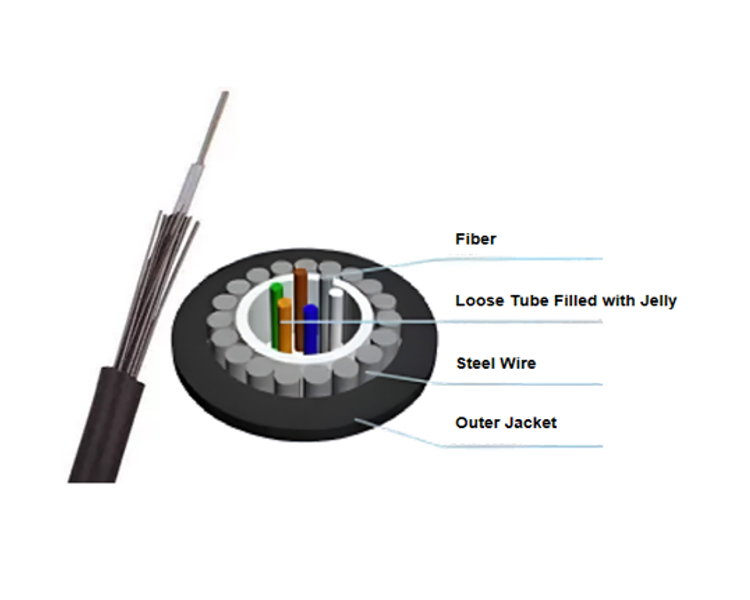Cat6 network cable, also known as Category 6 cable, is a type of twisted pair cable that is used for Ethernet networking. It is the most common type of network cable used today, capable of supporting speeds up to 10 Gbps. Cat6 cables are backwards compatible with all previous types of Ethernet cables and can therefore be used to upgrade existing networks. It is also the recommended cable type for new networks that need to support high speed and reliability.
However, most people only know about conventional round Cat6 network cables and do not know that there are flat Cat6 network cables, let alone what are the differences between round Cat6 network cables and flat Cat6 network cables besides appearance. In this article, we will explain in detail the differences between round Cat6 network cables and flat Cat6 network cables.
What is Round Cat6 Network Cable?
The round Cat6 network cable is a cylindrical insulated cable. Its circular shape is maintained by a central cross skeleton that separates the four pairs of twisted wires. This cross skeleton not only preserves the cable’s round form but also provides protection against external factors, minimizing the heat generated due to friction. Round Cat6 network cable is commonly used in data centers, switches, and other network equipment.

What is Flat Cat6 Network Cable?
Flat Cat6 network cable is a flat design of copper cable with twisted pairs running side by side. Most flat Cat6 network cables are not shielded. The flat shape limits the integration of the overall shielding mechanism, resulting in flat Cat6 cables lacking EMI (electromagnetic interference) shielding protection. It is precisely because of the absence of a shielding layer that flat Cat6 network cables are lighter, more cost-effective, and easier to carry compared to their round Cat6 counterparts.
What is the Difference Between Flat Cat6 Network Cable and Round Cat6 Network Cable?
EMI Performance: Round Cat6 cables typically offer better EMI performance than flat Cat6 cables.
This is because they have a more robust shielding system. EMI (electromagnetic interference) can cause signal degradation and errors, so better EMI performance can result in a more reliable network connection. However, it is important to note that the quality of the shielding system can vary depending on the manufacturer and the specific cable model.
Transmission Distance: Round Cat6 network cables are better suited for extended-distance transmissions.
The internal structure of flat Cat6 network cables consists of straight, closely adjacent cores without cross-skeleton support or spacing. Consequently, their resistance to interference is relatively weak. Most flat network cables available have a maximum length of around 30 meters. As the length increases, the transmission performance of flat cables diminishes.
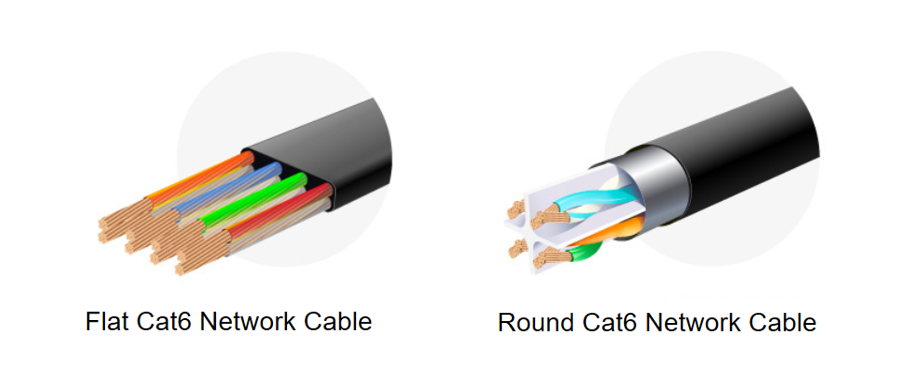
In contrast, round Cat6 network cables excel in long-distance transmissions due to their robust signal resistance to attenuation and interference. This is attributed to the tightly wound twisted pairs inside circular cables, with cross-skeleton support that separates these pairs to safeguard against external environmental interference. Therefore, round Cat6 network cables on the market can extend up to 100 meters, making them the superior choice for extended-distance transmission requirements when compared to flat network cables.
Flexibility: Flat network cables are more flexible than round network cables
Round Cat6 Network Cable: Round network cables are typically less flexible and have a larger bend radius, making them less suitable for tight spaces or installations that require sharp bends. Attempting to bend them at extreme angles can risk damaging the internal wires.
Flat Cat6 Network Cable: Flat network cables are more flexible allowing them to navigate corners and tight spaces more easily. Their flexibility is advantageous in scenarios where neat and unobtrusive cable routing is essential.
Ease of Installation: Flat network cables are easier to install than round network cables
Round Cat6 Network Cable: Installing round network cables can be more challenging in situations that involve complex cable runs or tight spaces. Their bulkier design may require more effort in cable management and routing.
Flat Cat6 Network Cable: Flat network cables are easier to install, especially when concealing the cable or navigating it through confined spaces. Their slim design simplifies cable routing and management, making them a popular choice in residential and office environments.
Durability: Flat network cables are more durable than round network cables
Round Cat6 Network Cable: Round network cables often have thicker and more robust insulation, providing better protection against physical wear and tear. This durability makes them suitable for rugged or industrial environments.
Flat Cat6 Network Cable: Flat network cables have thinner insulation, making them more susceptible to damage in demanding conditions. They are generally better suited for indoor, controlled environments where physical stress is minimal.
Tangle Resistance: Flat network cables are less prone to tangles than round network cables
Round Cat6 Network Cable: Round network cables are more prone to tangling and coiling, which can result in a mess of cables, especially when dealing with multiple cables in close proximity.
Flat Cat6 Network Cable: Flat network cables are less likely to tangle due to their design, simplifying cable management when multiple cables are used in the same space.
Applications:
Round Cat6 Network Cable: Round network cables are often preferred in industrial settings, data centers, and outdoor installations due to their durability and robust insulation. They are also used when the cable’s mechanical protection is a priority.
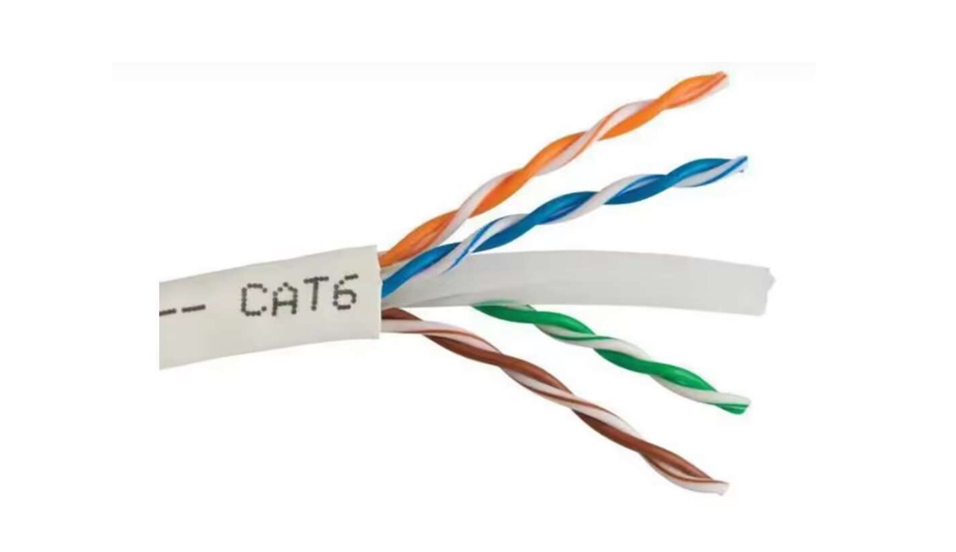
Flat Cat6 Network Cable: Flat network cables are popular in residential and office environments where a clean, concealed appearance is desired. They are well-suited for running along walls, under carpets, or behind baseboards without causing unsightly bulges.
Conclusion
When choosing round or flat Cat 6 cable, it is important to consider your specific requirements, budget constraints, and installation requirements. Round cables are well-suited for durable, long-term setups, while flat cables shine in scenarios where aesthetics and maneuverability are paramount. Both types can provide reliable network performance, but your choice should be based on your situation and personal preference. Understanding the differences between flat Cat6 network cables and round Cat6 network cables will help you make a choice.

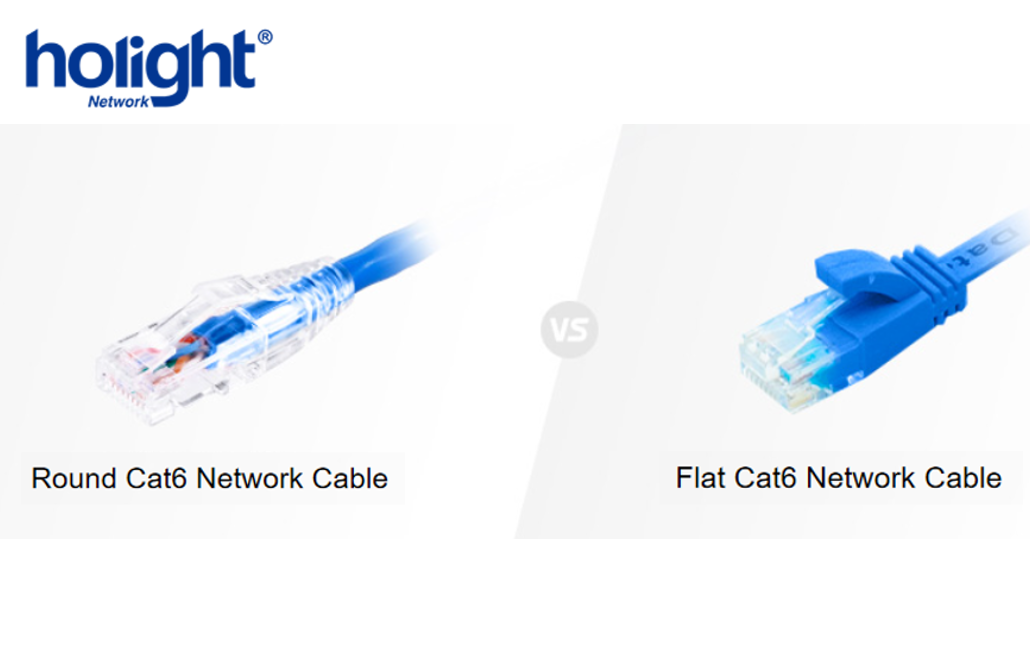
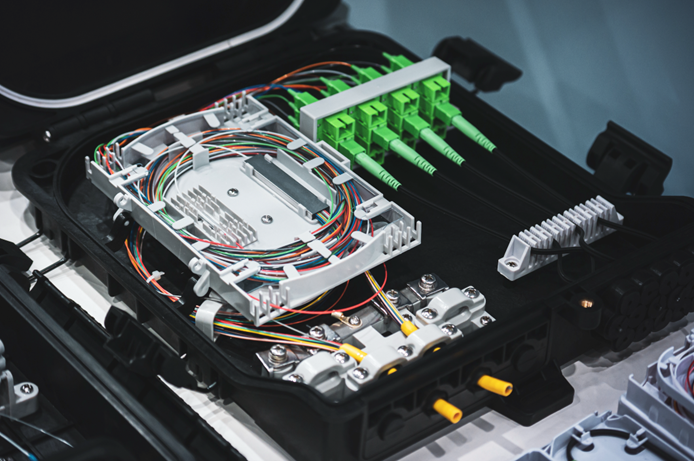


-1.png)

